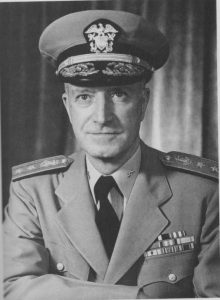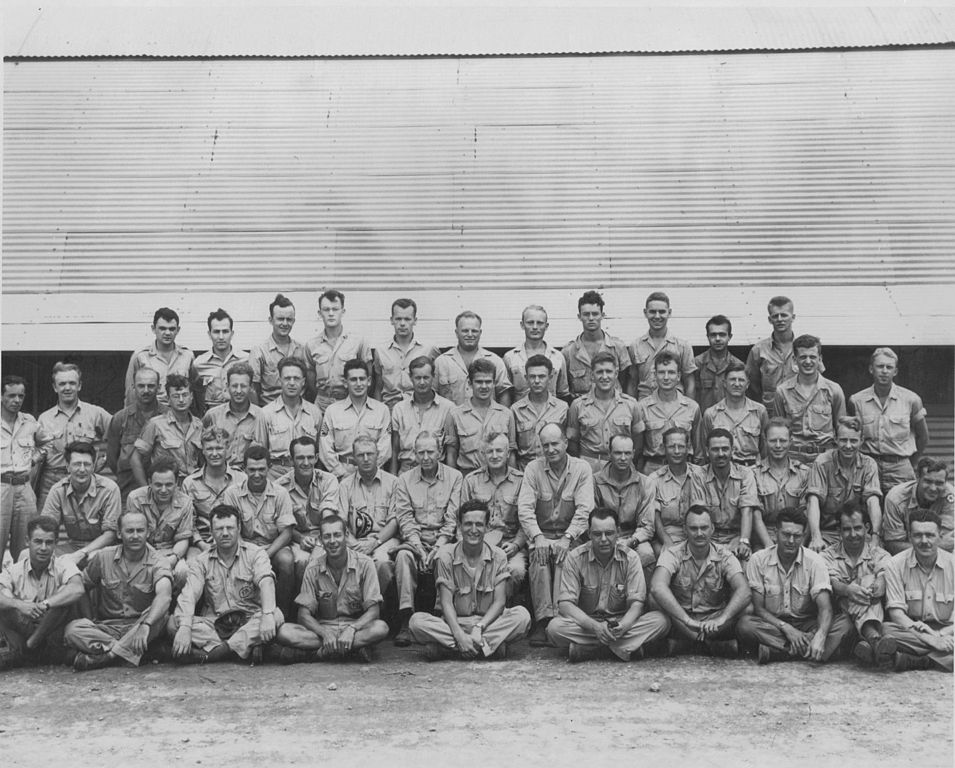Project Alberta, also known as Project A, was a division of the Manhattan Project created to plan and carry out all the necessary steps for making the atomic bombs operational. It was originally established at the Los Alamos site in March 1945, at about the same time as Project Trinity. But Alberta carried out some of its most famous work on Tinian Island in the Mariana Islands.
Alberta was led by Captain William “Deak” Parsons, who had also led the project’s predecessor, the Ordnance Division. Fifty-one members went to Tinian (codenamed “Destination”), the forward operating base for the atomic bombings, with additional members remaining stateside. The project included civilians, military officers, and enlisted men from the Special Engineer Detachment. They were specialists in a variety of fields, including physics, chemistry, engineering, radar, and explosives. Alberta also worked closely with the 509th Composite Group, the Army Air Forces unit that dropped the bombs on their targets in Japan.
Organization
Parsons ran Alberta with two deputies: Commander Frederick Ashworth, the Operations Officer, and Norman Ramsey, the Scientific and Technical Deputy. The project was organized into seven “Teams,” each of which had one or two leaders. There were also special consultants on Tinian such as William Penney, representing Great Britain, and Jim Nolan, a medical and radiation expert. The leaders of Alberta’s stateside iteration included several significant Manhattan Project figures, such as Norris Bradbury and Hans Bethe.
The men that transported the bomb components from the US mainland to Tinian were also a part of the project. Nolan and Robert Furman transported some of the components on the USS Indianapolis; Peer de Silva led a group flying with other parts on C-54 transport planes. De Silva, the head of security at Los Alamos, also headed up the First Technical Service Detachment, an Army administrative unit for the Alberta members that handled administration, housing, and security.

There were a few men on Tinian who were neither members of Alberta nor of the 509th. The Army and Navy each had a representative: General Thomas Farrell and Admiral William Purnell, respectively. Farrell was General Leslie Groves’s deputy, and Purnell also represented the Manhattan Project’s oversight apparatus, the Military Policy Committee. Parsons, Farrell, and Purnell made decisions jointly, sometimes along with Colonel Paul Tibbets of the 509th. They were known as the “Tinian Joint Chiefs.” Groves also had another representative on the island: Colonel Elmer Kirkpatrick, who arrived early on to take charge of facilities construction.
Roles
Members of Project Alberta were responsible for making all the plans for the bombs’ combat use, including participating in the bombing missions themselves. Some of the project’s tasks were accomplished while they were still on the mainland, including final bomb and fuse design, forward base selection, and modifying B-29 bombers to carry the massive bombs (see Project Silverplate). Project members then began planning testing for both aircraft and bombs, using non-nuclear versions of the bomb designs. Parsons began sending supplies, always in triplicate: one to Tinian, one to Iwo Jima (an emergency alternate base), and one to Inyokern, CA (a “practice” base to prove assembly could be done).
Once they got to Tinian, non-nuclear field tests continued. Alberta members also began assembling the bombs as soon as components arrived. When the time came for the bombing missions, Alberta members were on the flight crews of the planes. Military leaders on Tinian witnessed several B-29s crashing upon take-off, and feared the consequences of a crash with a bomb aboard. As a precaution, the bombs were designed to be armed in the air. That nerve-wracking task fell to Alberta members: Parsons himself accompanied the Little Boy uranium bomb to Hiroshima, and Ashworth went with the plutonium Fat Man to Nagasaki. Additional project members flew on the photography and instrument planes that accompanied the main bombers.
 The tasks on Tinian were accomplished with amazing speed. The bombs were ready to be deployed within three weeks of the success of the Trinity Test. Thirteen days after the July 16 test, all of the bomb components had arrived. Two days later, training and testing for the first bomb were complete. The day after that, Little Boy was ready for loading and delivery. That left a full five days before the actual use of the bomb on August 6. This speed set the standard for years to come; bomb assembly and preparation time would be standardized at two days for the post-war nuclear arsenal.
The tasks on Tinian were accomplished with amazing speed. The bombs were ready to be deployed within three weeks of the success of the Trinity Test. Thirteen days after the July 16 test, all of the bomb components had arrived. Two days later, training and testing for the first bomb were complete. The day after that, Little Boy was ready for loading and delivery. That left a full five days before the actual use of the bomb on August 6. This speed set the standard for years to come; bomb assembly and preparation time would be standardized at two days for the post-war nuclear arsenal.
Aftermath and Dispersal
The project members were ready to handle a stream of bombs arriving for assembly on Tinian, following a pause after Nagasaki. But that was not necessary: Japan surrendered a few days after the second bombing. Some of the extra bomb components that were already on the island were intentionally sunk to prevent secrecy from being compromised.
Parsons began planning to send Alberta members back home after the announcement of the surrender, but Groves ordered them to stay. The war was not officially over. Until the surrender was formally completed on September 2, 1945, they remained on Tinian. The soldiers, sailors, and scientists found themselves with little to do. They held a celebration when Parsons was promoted to commodore, serving improvised punch out of a laboratory beaker. They also went on fishing trips, sailing in small boats around neighboring islands while loudspeakers urged Japanese holdouts to lay down their arms.
Some project members eventually continued on to Japan with General Farrell, where they surveyed the effects of the bombings on Hiroshima and Nagasaki. The rest returned home, though many continued to have a role in American nuclear research going forward.
Click here to read profiles of Project Alberta veterans.





